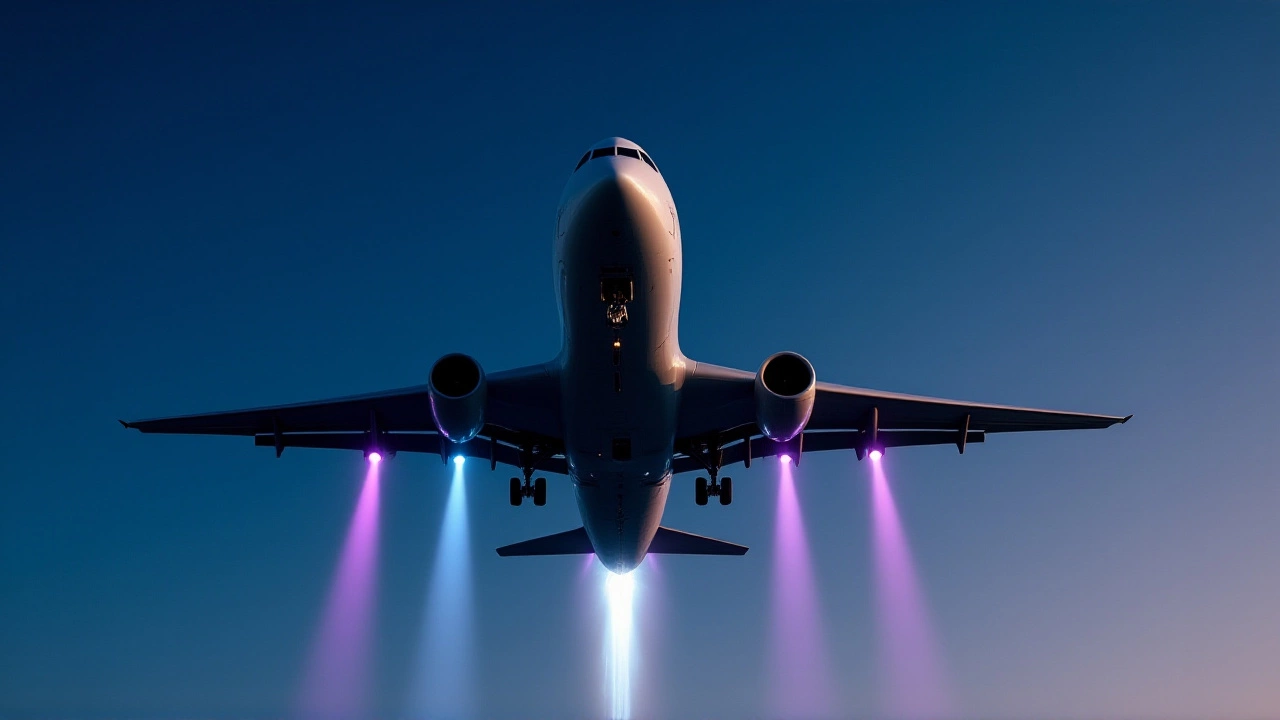Every time a plane takes off from London Heathrow Airport or lands at London Gatwick Airport, it’s not just guiding aircraft — it’s also sending a powerful radio beacon into deep space, potentially revealing Earth’s location to any advanced alien civilization within 200 light-years. That’s the startling conclusion of new research presented on the Royal Astronomical Society's National Astronomy Meeting 2025Durham by Ramiro Caisse Saide, PhD researcher at the University of Manchester's Department of Physics and Astronomy. The study reveals that civilian airport radar systems, combined with military installations, are unintentionally creating a detectable radio signature so strong it could be picked up by alien telescopes — if they exist — and interpreted as unmistakable evidence of intelligent life.
How Airport Radars Become Cosmic Signposts
The numbers are staggering. Collectively, major global airports like John F. Kennedy International Airport in New York and O’Hare International Airport in Chicago pump out a combined signal of 2×10¹⁵ watts — that’s two quadrillion watts — as their radar sweeps the skies for incoming and outgoing flights. This isn’t a targeted broadcast; it’s the byproduct of engineering designed to track planes, not stars. But according to Saide’s simulations, this noise doesn’t fade into cosmic silence. Instead, it expands outward in spherical waves, growing fainter but remaining detectable up to 200 light-years away by radio telescopes with sensitivity comparable to the Green Bank Telescope in West Virginia.
That’s not just a few nearby stars. That’s over 120,000 stellar systems — including many with planets in the habitable zone. And it’s not just airports. Military radar systems, which operate with greater power and tighter beams, produce signals up to 100 times stronger in specific directions. "From certain angles in space," Saide explained at the meeting, "these military pulses look like a lighthouse flashing in the dark — unmistakably artificial."
A Cosmic Footprint We Never Meant to Leave
What makes this discovery so unsettling is how unintentional it is. We don’t send these signals to announce our presence. We send them because we need to know if a plane is 10 miles out, not 10 light-years. Yet here we are, broadcasting our technological maturity across interstellar distances. The study tested how these signals would appear to hypothetical observers near Barnard’s Star, just six light-years away, and AU Microscopii, 32 light-years out. Even at those distances, the radar signatures would stand out against the natural radio noise of the universe — like hearing a diesel engine in a library.
Earth’s rotation adds another layer. As the planet turns, different radar installations come into view for an alien observer. A signal from Heathrow might peak as the observer’s sky aligns with Europe, then fade as the Pacific coast’s radars take over. This rhythmic, repeating pattern — tied to Earth’s 24-hour cycle — would be nearly impossible to explain as a natural phenomenon. "It’s not just energy," Saide said. "It’s structure. It’s pattern. That’s what intelligence leaves behind."

SETI’s New Hunting Ground
This research flips the script on how we search for alien life. For decades, the Search for Extraterrestrial Intelligence (SETI) has listened for deliberate signals — beacons, pulses, or encoded messages. But what if aliens aren’t broadcasting? What if they’re just flying planes? This study suggests we should be scanning for the same kind of leakage we’re producing: the radio noise of advanced aviation networks.
"If we’re detectable by our radars," Saide noted, "then so might they be. We now have a template for how to look for other civilizations — not by hunting for their radio broadcasts, but for their air traffic control systems."
Implications Beyond Alien Contact
The implications stretch beyond astrobiology. If Earth’s radar is visible from 200 light-years, then our entire technological footprint — from cell towers to satellites — may be leaving a trail. Saide’s earlier work showed mobile phone signals could be detected up to 10 light-years away. Now, with airport radars, we’ve extended that horizon by twentyfold.
It raises ethical questions: Should we be shielding our signals? Should we be more deliberate about what we leak into space? Some scientists argue that broadcasting our location is reckless — especially if hostile civilizations exist. Others counter that the galaxy is vast, and the odds of detection leading to contact are astronomically low. Still, the fact that we’re doing it without consent — without even realizing it — is something worth reflecting on.
The Royal Astronomical Society, which published the findings as part of its RAS PR 25/24 press release, emphasized that these signals represent "hidden electromagnetic leakage" — a byproduct of modern civilization that may one day be the first clue to our existence in the cosmos.

What’s Next?
Next, Saide and his team plan to model how these signals degrade over time and whether future technologies — like drone networks or satellite-based air traffic control — might amplify or reduce our cosmic footprint. They’re also working with radio astronomers to see if any known signals from distant stars match the pattern of Earth’s radar leakage. So far, none have been found. But the search has just begun.
Frequently Asked Questions
How far can Earth’s airport radar signals be detected by aliens?
According to the study, Earth’s combined airport and military radar emissions are detectable up to 200 light-years away by radio telescopes with sensitivity matching the Green Bank Telescope. This range includes over 120,000 star systems, many of which host planets in the habitable zone. Signals from individual military radars can appear up to 100 times stronger depending on the observer’s location.
Why would alien civilizations recognize these signals as artificial?
The radar signals exhibit repeating, structured patterns tied to Earth’s rotation and flight schedules — something natural cosmic phenomena don’t produce. Unlike random noise from stars or pulsars, these signals pulse in sync with human activity, creating a rhythmic signature that would stand out as engineered. The sheer power and consistency over time make them unmistakably artificial.
Could this mean aliens already know we’re here?
Possibly. Any civilization with radio telescope technology comparable to ours, located within 200 light-years, could have detected our radar since the 1950s, when airport systems became widespread. The nearest star system, Proxima Centauri, is just 4.24 light-years away — meaning signals from our early radar systems have already reached it. But whether anyone’s listening — or even capable of interpreting the signal — remains unknown.
Does this change how SETI searches for alien life?
Yes. Traditionally, SETI has focused on deliberate signals like narrow-band radio pulses. This research suggests we should also scan for unintentional leakage — specifically, the radio noise from advanced aviation systems. If alien civilizations rely on radar for air traffic, their signatures could be detectable using the same methods we’ve applied to Earth’s own emissions.
Are we doing anything to stop broadcasting our location?
No formal efforts exist to reduce this leakage. Airport and military radars are critical for safety and defense. While some researchers have called for "radio quiet" zones or directional shielding, no government or international body has proposed such measures. The trade-off between safety and cosmic privacy remains unresolved — and largely unacknowledged.
What’s the next step in this research?
The team plans to simulate how radar signals evolve as technology advances — including drone networks and satellite-based air traffic control. They’re also collaborating with observatories to scan nearby star systems for similar leakage patterns. If an alien civilization uses radar like we do, its signature might be detectable from Earth — turning the tables on our search for extraterrestrial intelligence.






